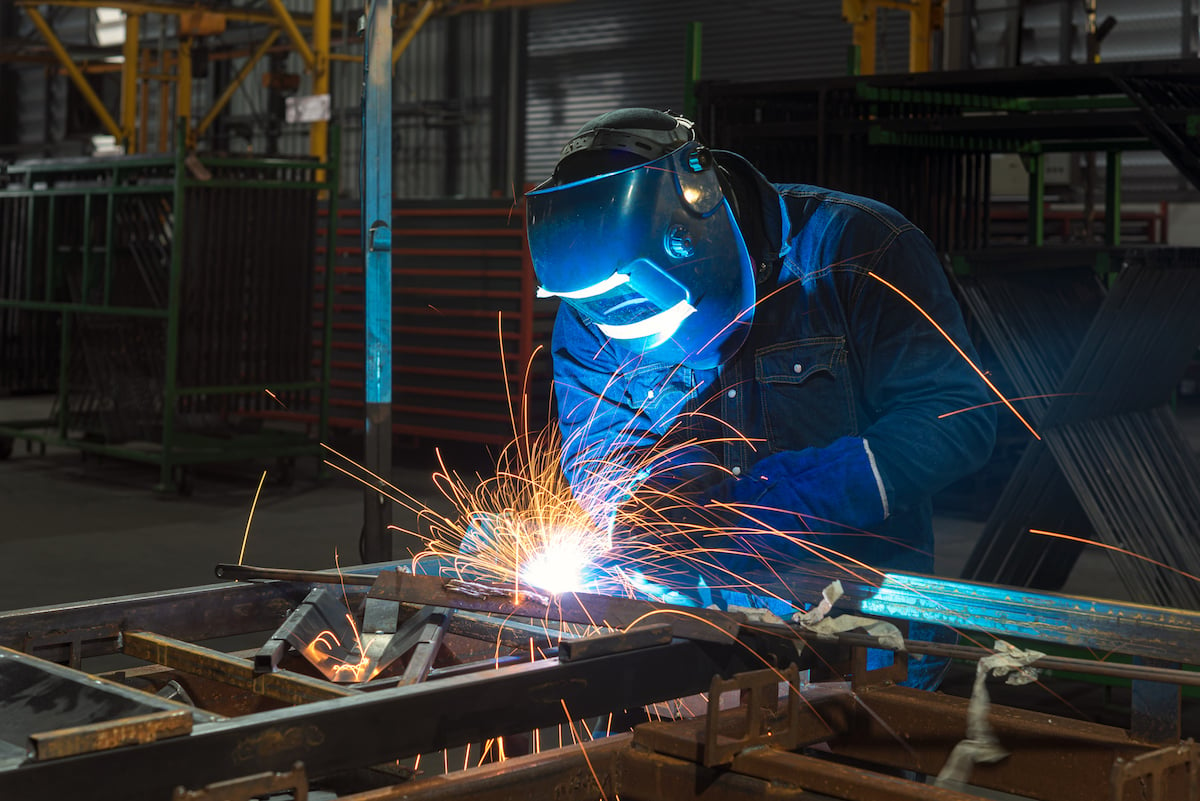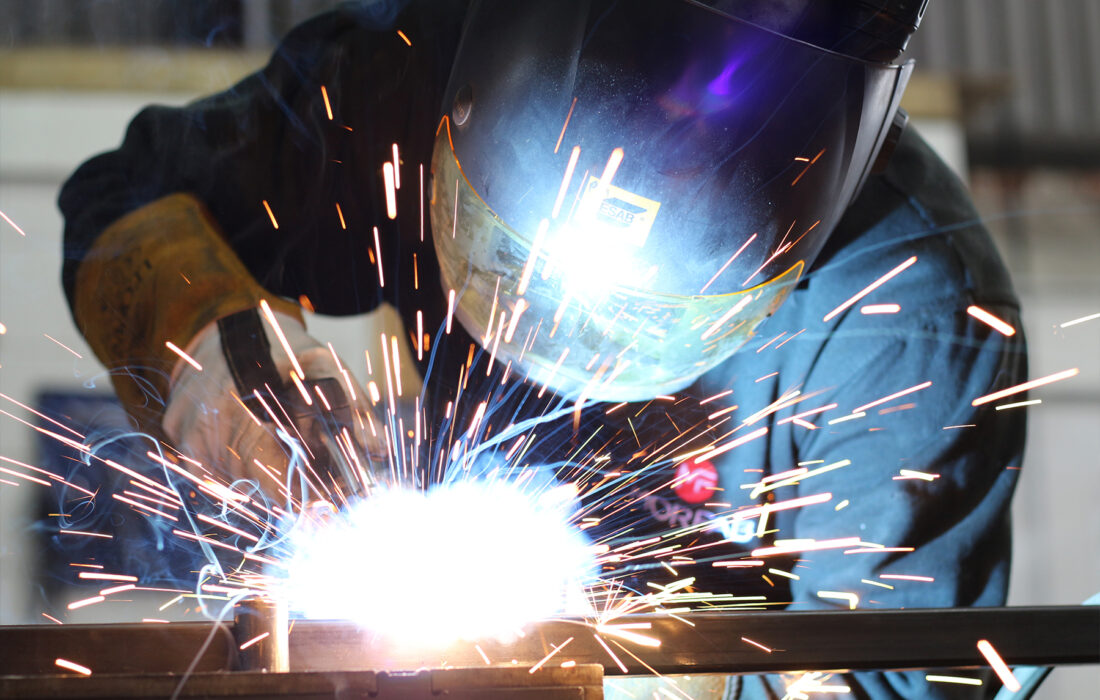Everything about Welding: Trick Insights Into Techniques and Finest Practices for Success
Welding incorporates a variety of strategies, each suited for certain products and applications. Understanding these approaches, such as GMAW, SMAW, and TIG, is vital for achieving optimal results. Moreover, the ideal devices and security methods can not be ignored. As prep work and troubleshooting play vital functions in the welding process, grasping these components can considerably improve the high quality of the end product. What are the essential factors that guarantee an effective weld?
Recognizing Various Welding Strategies
Welding strategies incorporate a selection of methods, each matched to details applications and materials. Amongst the most common strategies are Gas Metal Arc Welding (GMAW), Protected Metal Arc Welding (SMAW), and Tungsten Inert Gas Welding (TIG) GMAW, also understood as MIG welding, is prominent for its rate and adaptability, making it excellent for thin materials. SMAW, or stick welding, is preferred for its simpleness and performance in outdoor environments, specifically with thicker metals. TIG welding supplies accuracy and control, making it suitable for intricate work and non-ferrous steels (Montana Mobile Welding and Repair Belgrade). Each strategy has its special advantages and considerations, permitting welders to select the most effective method based on the job's needs, product kind, and desired outcomes. Comprehending these strategies is essential for successful welding
Vital Welding Tools and Tools
While different welding techniques need details abilities, the best equipment and devices are just as necessary for achieving quality results. Important welding tools includes welding machines, which vary depending upon the strategy-- such as MIG, TIG, or stick welding. Safety gear, consisting of safety helmets, aprons, and handwear covers, warranties security and convenience throughout the procedure. On top of that, clamps and components help protect products in position, making sure precision in welds. Consumables like welding poles, cord, and shielding gas are likewise crucial elements that affect the high quality of the weld. In addition, tools such as mills and cutters promote surface area prep work and post-weld finishing, adding to a specialist end result. Investing in top quality equipment ultimately boosts the effectiveness and effectiveness of welding projects.
Safety Practices in Welding
Proper safety and security techniques are essential in the welding sector to safeguard workers from possible threats. Welders must use suitable personal protective devices (PPE), including headgears with correct shading, gloves, and flame-resistant apparel. Appropriate air flow is important to reduce exposure to hazardous fumes and gases generated throughout the welding process. Additionally, employees ought to be educated in the correct handling of welding equipment to avoid crashes. Fire safety and security steps, such as maintaining flammable products away from the welding area and having fire extinguishers easily available, are necessary. Regular examinations of equipment and offices can help recognize prospective hazards prior to they result in crashes. By sticking to these safety methods, welders can develop a safer working setting and decrease risks connected with their profession.
Readying Products for Welding
Preparing products for welding is an important step that significantly affects the quality and stability of the end product (Montana Mobile Welding and Repair Belgrade Fabrication). Appropriate prep work includes cleaning the surfaces to remove pollutants such as dirt, oil, and rust, which can jeopardize the weld. Strategies such as grinding, sanding, or utilizing solvents are frequently used to attain a clean surface area. Additionally, guaranteeing that the products fit together snugly is important; voids can lead to weak welds. It's likewise vital to consider the alignment and positioning of the components, as this will impact the convenience of welding and the last result. Choosing the appropriate filler product and making certain compatibility with the base metals is essential for attaining solid, durable welds.
Tips for Getting High-Quality Welds
Attaining high-grade welds requires interest to information and adherence to best practices throughout the welding procedure. Correct joint preparation is necessary, making certain surface areas are tidy and complimentary from pollutants. Selecting the proper filler product and welding method based on the base steels is critical for perfect bonding. Keeping regular traveling speed and angle while welding can advertise and avoid defects harmony. Furthermore, managing warmth input is vital; too much heat can lead to warping and deteriorated joints. If required, consistently evaluating the welds during the procedure enables for immediate changes. Utilizing proper post-weld treatments, such as cleaning and stress alleviation, can boost the durability and honesty of the weld, ultimately ensuring a successful result.
Repairing Usual Welding Issues
Welding typically provides difficulties that can affect the quality and stability of the last item. Typical issues such as porosity, inconsistent weld grains, and overheating can arise, each needing particular fixing techniques. Comprehending these troubles is crucial for welders to improve their abilities and achieve excellent outcomes.
Porosity Issues Discussed
Porosity can often be forgotten, it remains an essential concern in welding that can endanger the stability of an ended up product. Porosity refers to the visibility of little gas pockets within the weld bead, which can damage the joint and lead to premature failure. This trouble generally develops from contaminants, wetness, or inappropriate securing gas protection throughout the welding procedure. To reduce porosity, welders need to verify that the base products are completely dry and tidy, utilize ideal securing gases, and preserve regular welding parameters. On a regular basis inspecting the devices and setting can additionally assist determine prospective concerns before they manifest in the weld. Resolving porosity effectively is essential for accomplishing solid, durable welds that meet top quality criteria.

Inconsistent Weld Beads
Irregular weld grains can considerably affect the top quality and toughness of an ended up product. Different elements add to this issue, consisting of inappropriate travel rate, incorrect amperage setups, and inconsistent electrode angles. When Visit This Link the welder relocates as well rapidly, a grain may appear slim and do not have infiltration, while moving too gradually can cause extreme build-up. Furthermore, using the wrong amperage can lead to either damaging or excessive spatter, both of which concession weld stability. The welder's method, such as inconsistent lantern activity, can additionally result in unequal grain look. To mitigate these problems, welders should concentrate on preserving steady, controlled motions and guaranteeing appropriate tools setups to achieve harmony in their welds. Consistency is essential to achieving strong and trustworthy welds.
Overheating and Warping Issues
Too much warmth throughout the welding process can result in substantial getting too hot go and warping issues, impacting the structural stability of the work surface. These issues often materialize as distortion, which can compromise alignment and fit-up, making additional assembly challenging. Aspects contributing to overheating consist of the choice of welding parameters, such as voltage and travel rate, in addition to the kind of material being welded. To minimize these concerns, welders must keep constant traveling speed and appropriate warm input while monitoring the work surface temperature level. Additionally, pre-heating or post-weld warmth therapy can assist ease anxieties triggered by fast cooling - Montana Mobile Welding and Repair Belgrade Welding. Routine inspection and adherence to finest practices are necessary in preventing overheating and making sure the filler wire long life and integrity of welded frameworks
Frequently Asked Questions
What Are the Occupation Opportunities in the Welding Industry?
The welding industry uses varied profession chances, including positions as welders, designers, assessors, and educators. Experts can operate in manufacturing, construction, aerospace, and automotive sectors, profiting from strong demand and affordable salaries in various duties.
Exactly How Can I Improve My Welding Speed Without Sacrificing Top Quality?
To enhance welding speed without sacrificing high quality, one ought to exercise efficient strategies, preserve tools, enhance setups, and boost hand-eye sychronisation. Regular training and seeking feedback can likewise considerably contribute to achieving much faster, high-grade welds.
What Qualifications Are Readily Available for Welders?
Numerous accreditations exist for welders, consisting of those from the American Welding Society (AWS), the National Facility for Construction Education And Learning and Research Study (NCCER), and different industry-specific companies. These qualifications enhance employability and show ability efficiency.
Just How Does Welding Influence the Qualities of Metals?
Welding affects the homes of metals by modifying their microstructure, which can bring about adjustments in stamina, hardness, and ductility. Warm input and air conditioning prices during the process significantly affect these product qualities.
Can I Bonded Dissimilar Metals Together?
